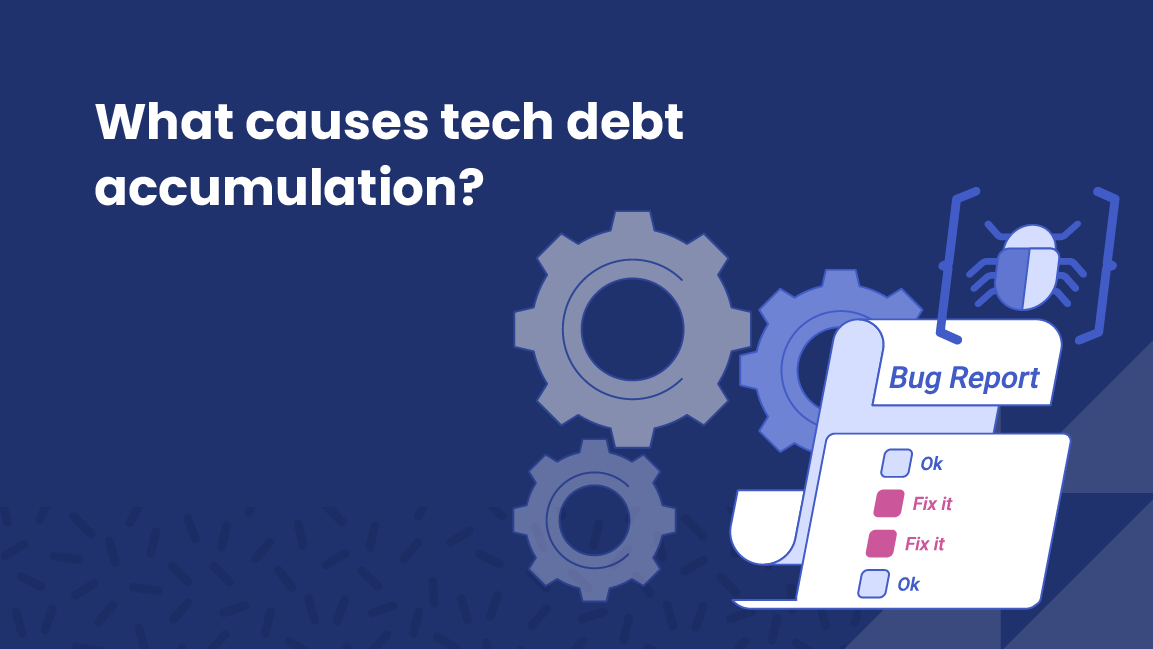Technical debt: Burden or business as usual?

Speed of delivery and getting a unique solution on the market are keys to success for many software companies, but with rapid innovation, some amount of tech debt is inevitable — and often considered a fair tradeoff if customer expectations (and agency goals) are met.
But if your team is repeatedly having to rush to release solutions without thorough testing, the result could be less efficient or contain buggy code. According to one report that surveyed CIOs, CTOs, and CISOs, almost 70% of organizations view technical debt as having a high level of impact on their ability to innovate.
But instead of labeling tech debt as either a non-issue or “bad,” let’s explore what tech debt is, how it affects agency IT teams, and how to strategically incorporate tech debt management into your workflow.
What is tech debt?
Technical debt shows up for numerous reasons: inefficient code, poor (or nonexistent) documentation, implementing short-term solutions that never get revisited, or postponing bug fixes.
What causes tech debt accumulation?
- Pressure to meet deadlines
- Scope changes during development
- Outdated technology
- Insufficient testing
- Patches or quick-fixes
New work on new features often takes priority, potentially leaving a backlog of issues. Eventually, the technical debt builds up, and coding fixes threaten to derail new projects, slowing down development.
How does tech debt impact digital government?
Technical debt can increase the risk of errors and system crashes, and as tech debt accumulates, engineers have to dedicate more and more time to remedying issues. That means that successfully launching new features is more difficult, time-consuming, and costly for IT teams.
In other words, technical debt creates compounding work for employees, resulting in stressed-out staff, project delays, security risks, or worsening user experience.
But “leaders that actively manage and reduce technical debt will achieve at least 50% faster service delivery times to the business,” according to Gartner research.
Best practices for technical debt management
Tackle tech debt by building that time into your strategy (including everything from working through the backlog of tech debt to documenting new processes).
- Communicate tech debt as a business issue: The amount of technical debt, how clearing tech debt is managed, the time needed for fixes, and strategy going forward aren’t just IT issues. The strategy should align with business priorities as much as possible.
- Classify technical debt to build a better strategy: Broadly, figure out whether the tech debt is acute or systemic. Smaller, acute issues should be easier to knock out, while larger tech debt could be mingled into core product features, requiring much more time and effort to fix.
- Create and document a scale for prioritizing tech debt: Understanding when and why to work on tech debt is key to managing the productivity of your agency’s IT team. Figure out a scale that takes into account things such as whether or not the tech debt will cause a significant problem soon, the impact on user experience, and the impact on future innovation projects, and weigh it against other technical debt you’ve accumulated.
- Foster a culture that understands tech debt management is a process: As your agency IT team continues to build, you’ll be consistently clearing old tech debt, creating automated tests for bugs, and documenting new processes. Each team member should feel some sense of ownership and responsibility for ongoing tech debt maintenance.
Make technical debt part of your business roadmap
Wrap technical debt into your IT team’s workflow so it’s an ongoing process: Document all legacy technical debt and new debt that’s introduced so staff can easily (and transparently) find and clear those tickets.
Just like financial debts, technical debt gets worse over time. If your team can efficiently manage technical debt (before it compounds), your agency will have more time, money, and energy for new projects.
Looking for more content?
Get articles and insights from our monthly newsletter.




